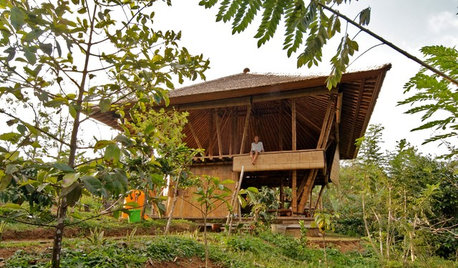A question about makeup air
msbrandywinevalley
10 years ago
Related Stories

LIGHTING5 Questions to Ask for the Best Room Lighting
Get your overhead, task and accent lighting right for decorative beauty, less eyestrain and a focus exactly where you want
Full Story
GREEN BUILDINGConsidering Concrete Floors? 3 Green-Minded Questions to Ask
Learn what’s in your concrete and about sustainability to make a healthy choice for your home and the earth
Full Story
REMODELING GUIDESConsidering a Fixer-Upper? 15 Questions to Ask First
Learn about the hidden costs and treasures of older homes to avoid budget surprises and accidentally tossing valuable features
Full Story
MATERIALSInsulation Basics: What to Know About Spray Foam
Learn what exactly spray foam is, the pros and cons of using it and why you shouldn’t mess around with installation
Full Story
GARDENING GUIDESNew Ways to Think About All That Mulch in the Garden
Before you go making a mountain out of a mulch hill, learn the facts about what your plants and soil really want
Full Story
HEALTHY HOMEA Guide to Indoor Air Purifiers
Get the lowdown on air filtration systems for your house and the important ratings to look out for
Full Story
MOST POPULARWhat to Know About Adding a Deck
Want to increase your living space outside? Learn the requirements, costs and other considerations for building a deck
Full Story
MOST POPULARMy Houzz: Open-Air Living in the Mountains of Bali
Community, jaw-dropping beauty and sustainability come together in a tropical paradise for a London expat
Full Story
REMODELING GUIDESSurvive Your Home Remodel: 11 Must-Ask Questions
Plan ahead to keep minor hassles from turning into major headaches during an extensive renovation
Full Story
GREEN DECORATING8 Questions to Help You See Through Green Hype
With the ecofriendly bandwagon picking up some dubious passengers, here's how to tell truly green products and services from the imposters
Full Story






philwojo99
weissman
Related Professionals
Euclid Kitchen & Bathroom Designers · Saratoga Springs Kitchen & Bathroom Designers · South Barrington Kitchen & Bathroom Designers · Olympia Heights Kitchen & Bathroom Designers · Eagle Mountain Kitchen & Bathroom Remodelers · Alpine Kitchen & Bathroom Remodelers · Cocoa Beach Kitchen & Bathroom Remodelers · Franconia Kitchen & Bathroom Remodelers · Saint Helens Kitchen & Bathroom Remodelers · Vienna Kitchen & Bathroom Remodelers · Phillipsburg Kitchen & Bathroom Remodelers · Aspen Hill Cabinets & Cabinetry · Bonita Cabinets & Cabinetry · Gaffney Cabinets & Cabinetry · Tacoma Cabinets & Cabinetryjakvis
kaseki
a2gemini
bookmom41
philwojo99
a2gemini
kaseki
sjhockeyfan325